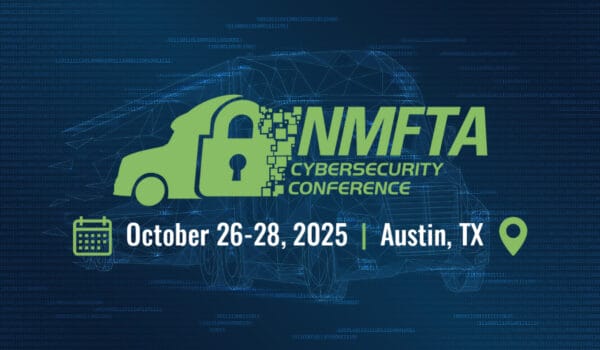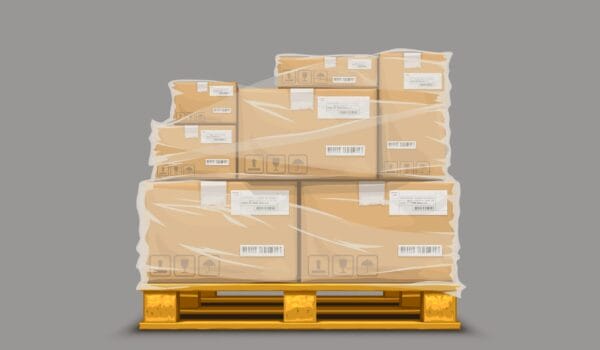Cybersecurity threats to the trucking industry are not only a problem because they cause so much damage. They’re also a problem because they come in so many different forms.
And as much as we talk to our members about the need to put protections in place, we recognize that cybersecurity is, in many ways, a moving target. Attackers not only have multiple methods of breaching your system, but they also have a variety of tactics to employ once they’re in.
In today’s world of cybersecurity, being prepared is more complicated than it used to be, which is why it is best to understand where current threats exist and what you can do to shield yourself from them.
Let’s break down the 10 leading cybersecurity threats currently facing the trucking industry, including some insights on how to be ready for them:
1. Phishing Attacks
These are e-mails designed to trick you into giving up sensitive information such as usernames, passwords, and credit card details. They might misrepresent a link or claim an urgent need to update the payment information on a critical account. Whether the target provides personal or company information, the result is a cyber-bandit with lots of access to your data and system.
The best way to defend against phishing attacks is to train your employees to spot one, not to click links or provide any information when they do.
2. Malware/Ransomware
These are two different but related threats.
Malware seeps into your system and causes damage, such as data loss or system failure. Imagine suddenly having no idea where your drivers and your assets are, or what the status of a delivery is, or which invoices have been issued and/or paid. That’s what malware can do.
Ransomware is a type of malware that causes data to be encrypted and then demands payment in exchange for the encryption key. In 2020, Forward Air was the target of a massive ransomware attack that forced it to alert the SEC of likely revenue losses.
Advance Endpoint Protection is effective against malware, and when combined with immutable backups, it can also help protect against ransomware.
3. Distributed Denial-of-Service (DDoS) Attacks
DDoS attacks flood a website with traffic causing it to overload and crash, which prevents users such as customers from accessing critical data. The best defense is to employ an authentication system that requires legitimate users to demonstrate they’re real people.
4. Social Engineering Attacks
Social engineering attacks trick users into providing information or access to their system or other critical information. These can include a fake or spoofed email or a deep-fake video in which someone familiar appears to be requesting or demanding access to sensitive information.
Instruct your team members how to recognize such attacks, and let them know that your company would never seek their information in this manner.
5. Insider Threats
An insider threat is precisely what the name suggests—members of your team who have access to your data, systems, or networks using that access to threaten you.
To protect your company against insider threats, be attentive about who has access to sensitive information or systems (possibly even requiring background checks), and be sure you can monitor who accesses the system and when. Vetting your team members and staff is critical to data safety.
6. Advanced Persistent Threats (APTs)
APT attacks are highly sophisticated attacks usually undertaken by criminal organizations or rogue governments, targeting specific organizations.
Since APT attacks aim to destabilize a nation’s critical infrastructure, the trucking industry has become a direct target. Companies may require professional assistance from a cybersecurity expert to prepare for attacks like these. Talking to us is an excellent place to start.
7. Cloud-Based Attacks
The appeal of cloud-based storage is that data isn’t on a server, which can be helpless to a system attack. But the cloud is part of the Internet, which means it comes with different vulnerabilities.
If an attacker can access your cloud-based data, the result can be data breaches and theft. Ensure you protect your cloud-based data with the most vigorous security measures available. Each cloud provider will offer a list of best practices to provide robust security configurations. The Cloud Security Alliance also offers a checklist.
8. Internet-of-Things Attacks
The internet used to be a relatively simple network of computers. Now anyone can access the internet with phones, tablets, and other specialized devices that connect. That makes the devices themselves an inviting target for attackers.
Attacks that utilize mobile devices are particularly damaging to the trucking industry. Drivers are encouraged to run entire transportation management systems on handheld devices and diagnostic systems that can connect from one point to a whole fleet.
If your fleet uses multiple devices to run its operating system, all network-connected devices must be secure. Cloud security training, best practices, and especially cloud PENTESTing can make the difference here.
9. Unpatched and Zero-Day Vulnerabilities
Unpatched systems lead to vulnerabilities because experienced hackers know how to scan systems to find and exploit them.
Zero-day attacks can be even more insidious, as attackers pinpoint system vulnerabilities that manufacturers didn’t know about and thus have not patched. A white-hat (ethical) hacker can show you how to locate and address such vulnerabilities.
10. Improperly Configured (or Untested) Immutable Backup Systems
A reliable backup system is critical to surviving a cyberattack. Hackers know this, so they look for opportunities to attack your backup system before they take on the main enterprise systems.
If you haven’t configured your immutable backup system correctly and haven’t tested it to be sure it stands up to threats, you could be in the worst possible position following a cyberattack. It is best to have an expert work with you to test your immutable backup system and ensure you’ve configured it correctly.
The interconnected nature of all business brings many advantages, especially for an industry that does much of its work on the road with people and assets spread all across the country and constantly moving.
Technology that can keep us connected is vital. But that is also what makes it such an enticing target for criminals. This article aims to help you be ready and take the necessary steps to protect your enterprise from attackers.
You do not have to be vulnerable if you act wisely and proactively. Hopefully, this can help serve as a road map for you to do just that.
Feel free to connect with me at any time: antwan.banks@nmfta.org.






